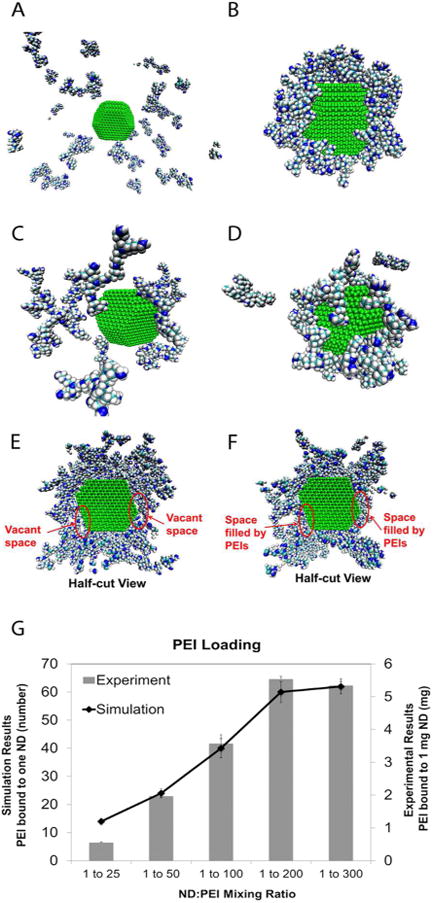Fig. 2.

The importance of the ionization of surface functional groups towards mediating PEI loading is demonstrated in parts A and B. A and B show the final structure of a non-functionalized ND and functionalized ND, respectively, with 24 PEIs surrounding the particle after 8 ns of interaction time. The non-functionalized ND is unable to bind with any PEI because the screening of surface electrostatics by the water solvent is too strong to overcome. On the other hand, the functionalized ND is able to load all 24 PEIs successfully. The binding of PEIs to a functionalized ND at two different mixing ratios is shown in parts C-F and the comparison between the loading results of experiments and simulations is shown in part G. Part C shows the initial structure of a functionalized ND with 15 PEIs surrounding the particle, corresponding to a mixing ratio of 1:25 (ND:PEI, by weight). Part D shows the final structure of part C after 8 ns of interaction time, with most PEI's binding to the ND surface. Similarly, parts E and F show the initial and final configuration of a half cut-away functionalized ND with 120 PEIs after 8 ns interaction, corresponding to 1:200 (ND:PEI, by weight) mixing ratio. Part F shows PEI filling in the vacant space found near the ND surface shown in part E. Part G compares loading trends between the experimental and simulation results as a function of mixing ratio. The simulations were able to predict a saturation in PEI loading at a 1:200 mixing ratio, demonstrated by the lack of increasing PEI loading above the 1:200 mixing ratio.
